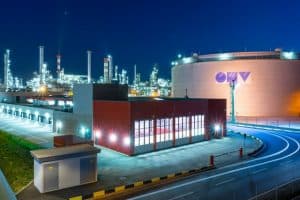
We may look back at this time as the inflection point toward the “lights-out” factory of the future, and even “Industry 5.0.”
Industry 4.0, the technology-driven initiative to connect and digitize every factory, facility, office, and supply chain to every machine, sensor, and system on the planet has been an ambitious undertaking from the time it was conceived almost a decade ago.
Now, the Covid-19 crisis has added a whole new dimension to the Industry 4.0 movement.
See also: Why People Are Key to Industry 4.0 Success
Lee Coulter, IEEE Working Group Chair on Standards for Intelligent Process Automation, for one, sees the impact as an accelerator to forced innovation, along the same lines as other major global crises. “Threats, whether from war or famine or disease have massively advanced innovation,” he observes. “In 2020, the reality of exponential technology being applied in almost every facet of life puts both the innovation and adoption on an exponential curve. The instantaneous ability to collaborate, communicate, and co-innovate further accelerate us toward Industry 4.0. We have advanced global collaboration on a scale that will be studied for decades.”
For example, Coulter continues, the Covid crisis “forced the adoption of remote work. Billions of people realized in just 60 days that work can be done successfully via telepresence technologies.”
McKinsey has been tracking the acceleration of Industry 4.0 technologies and concludes the Covid crisis has been an inflection point for the movement, though growth has been uneven. Manufacturers and supply chains, as a result of the crisis, “are likely to be much more digital,” state the McKinsey team of researchers, led by Mayank Agrawal. “Industry leaders are leveraging Industry 4.0 solutions: 39 percent have implemented a nerve-center, or control-tower, approach to increase end-to-end supply-chain transparency, and around a quarter are fast-tracking automation programs to stem worker shortages arising from COVID-19.”
From the start of the crisis, there was a mixed impact on Industry 4.0 initiatives, as some companies froze their efforts to preserve cash, the McKinsey researchers state. However, others “accelerated their adoption, particularly of use cases for supporting business continuity—such as automated planning, digital performance management, digital remote work, and automation to reduce human-to-human interaction.”
The companies moving forward with Industry 4.0 and digital solutions “are better positioned to weather the storm, having moved faster and further than their peers during the crisis,” Agrawal and his colleagues find. This advantage is not lost on the industry as they emerge from the crisis. In the survey, 93 percent of manufacturing and supply-chain professionals said they plan to focus on the resilience of their supply chain, and 90 percent plan to invest in talent for digitization.
There is also a propensity toward accelerated adoption for “quick-win solutions that help companies respond and adapt to the new norms — such as tracking employee health, enforcing safe distancing on the shop floor, and supporting remote collaboration,” McKinsey finds. Another technology emerging front and center from the crisis has been digital performance management (DPM), which measures user satisfaction correlated to technologies up and down the stack. “Digital work instructions, augmented reality-based operator assistance, and use-cases relying on simple, inexpensive retrofit automation may also become more widespread regardless of companies’ existing technology infrastructure.”
In many cases, but not all, there is an increased push for integration between information technology (IT), operations technology (OT), and data infrastructure, which support efforts including digital twins and logistics automation. “Companies that already have the critical capabilities, such as manufacturing-execution systems, IT/OT stacks, and data marts or data lakes, may speed ahead,” the researchers predict.
We are still only in the beginning of the great acceleration that was sparked only six months ago. IEEE’s Coulter suggests that we may look back at this time as the inflection point toward the “lights-out” factory of the future, and even “Industry 5.0,” in which machines will essentially be building and managing themselves, autonomously. “Did this pandemic accelerate us toward the already inevitable Industry 5.0? Yes. But I believe it will only be historians looking at data 30 years from now that will be able to gauge by how much.”




























